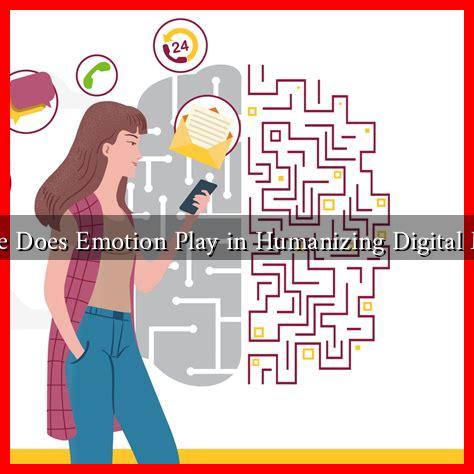-
Table of Contents
What Role Does Emotion Play in Humanizing Digital Messages?
In an increasingly digital world, the way we communicate has evolved dramatically. As businesses and individuals rely more on digital messages—be it emails, social media posts, or chatbots—the need to infuse these communications with emotion has become paramount. Emotion not only enhances engagement but also fosters connection, making digital messages feel more human. This article explores the role of emotion in humanizing digital messages, supported by research, examples, and case studies.
The Importance of Emotional Connection
Emotional connection is a powerful driver of human interaction. According to a study by the American Marketing Association, emotionally connected customers are more likely to remain loyal to a brand and recommend it to others. This principle applies equally to digital communication. When messages resonate emotionally, they can:
- Enhance engagement and retention
- Foster trust and credibility
- Encourage sharing and virality
- Drive action and conversion
Understanding Emotional Triggers
To effectively humanize digital messages, it is essential to understand the emotional triggers that resonate with audiences. Research indicates that certain emotions are more likely to elicit a response:
- Joy: Messages that evoke happiness can lead to increased sharing and positive brand perception.
- Surprise: Unexpected elements in a message can capture attention and create memorable experiences.
- Sadness: While it may seem counterintuitive, messages that evoke sadness can foster empathy and connection.
- Fear: Fear-based messaging can prompt immediate action, especially in crisis situations.
Case Studies: Successful Emotional Messaging
Several brands have successfully harnessed emotion in their digital communications, leading to significant engagement and loyalty. Here are a few notable examples:
- Always’ #LikeAGirl Campaign: This campaign aimed to empower young girls by redefining the phrase “like a girl.” The emotional storytelling resonated with audiences, leading to over 90 million views on YouTube and a significant increase in brand perception.
- Google’s “Year in Search”: Each year, Google releases a video summarizing the most searched topics, often highlighting emotional moments from the past year. These videos evoke nostalgia and connection, resulting in millions of views and shares.
- Charity: Water: This nonprofit organization uses emotional storytelling to highlight the impact of clean water on communities. Their digital campaigns often feature personal stories, leading to increased donations and engagement.
Strategies for Infusing Emotion into Digital Messages
To effectively humanize digital messages, consider the following strategies:
- Use Storytelling: Craft narratives that resonate with your audience’s experiences and emotions.
- Incorporate Visuals: Images and videos can evoke emotions more effectively than text alone. Use visuals that align with your message.
- Be Authentic: Authenticity fosters trust. Share real stories and experiences to create a genuine connection.
- Utilize Humor: When appropriate, humor can lighten the mood and create a positive emotional response.
The Future of Emotion in Digital Communication
As technology continues to evolve, the role of emotion in digital communication will only become more critical. With advancements in artificial intelligence and machine learning, brands are beginning to leverage emotional analytics to tailor messages based on audience sentiment. This trend suggests a future where digital messages are not only personalized but also emotionally intelligent.
Conclusion
In conclusion, emotion plays a vital role in humanizing digital messages. By understanding emotional triggers and employing effective strategies, brands and individuals can create more engaging and meaningful communications. As we move forward in a digital-first world, prioritizing emotional connection will be essential for fostering loyalty, trust, and engagement. The ability to evoke emotion in digital messages is not just a marketing tactic; it is a fundamental aspect of human interaction that can transform the way we communicate in the digital age.

